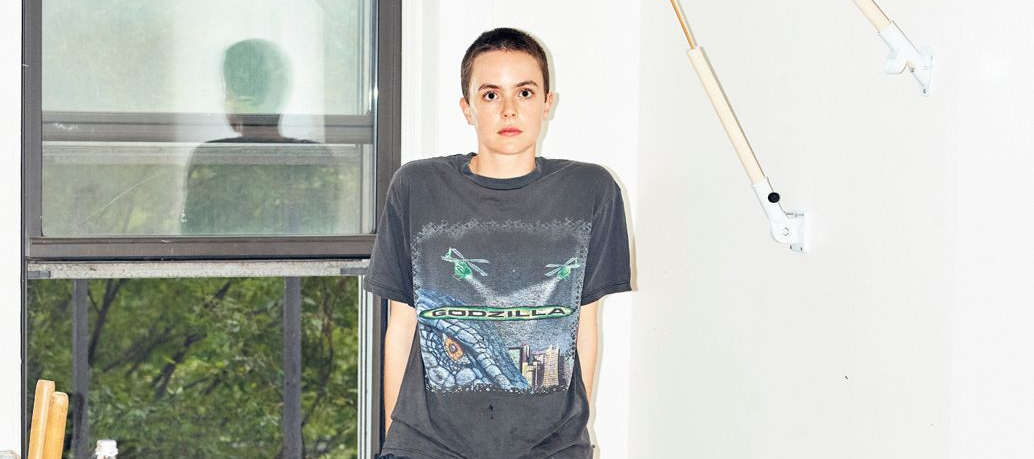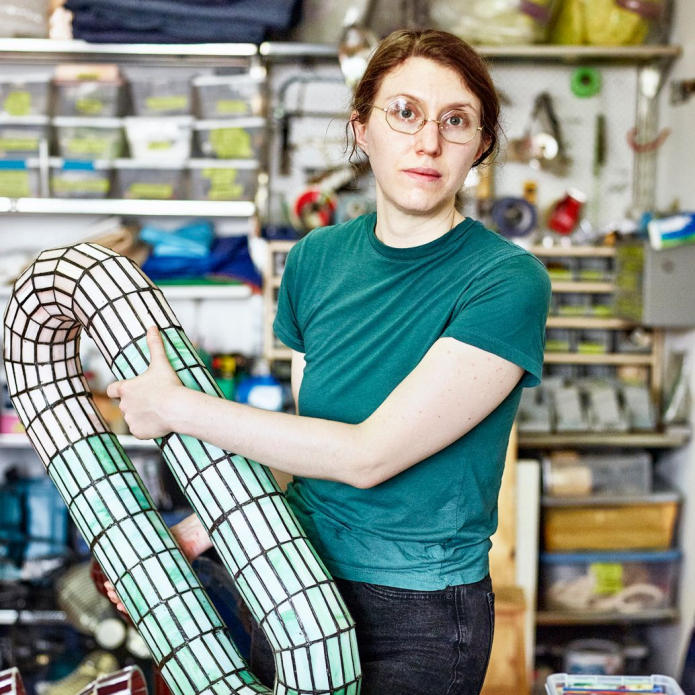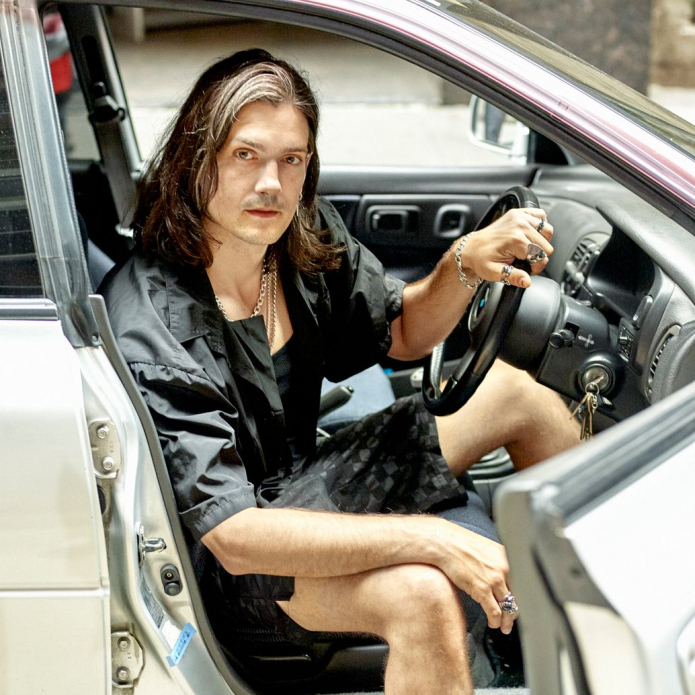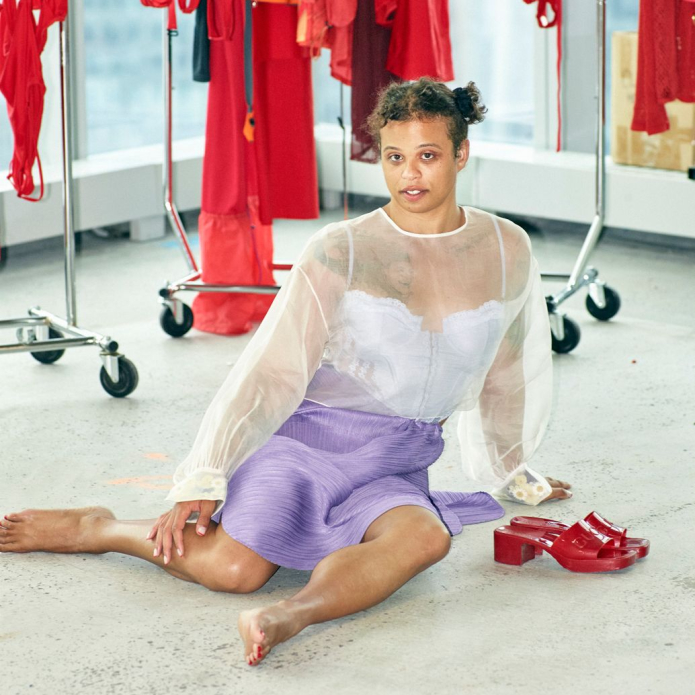One of the first sculptures that Liz made was based on Isis and Horus—an Egyptian Madonna scene. “It’s about loneliness,” she tells me, “this contact that you’re never able to achieve.” She often works with the form of grand sculpture—monuments, icons and relics—but translated through personal materials—her late mother’s dish towels, her own old swimsuits and childhood ribbons. In a sculpture called Virginia (2019) for her 2019 “Headmaster” show at Los Angeles’s Smart Objects, she poked skewers into the gauze of her sister’s prom dress, drawing out the material’s pucker and frill to get at the growing pains of adolescence. “I suppose it’s a way of letting go,” she says, when I ask her how the process of sculpture changes her relationship to those objects.
Sculpture actually came to Liz later—she studied painting in undergrad and didn’t start making 3D work until 2016. She worked as a guard at the Met for a time before eventually starting her MFA at Hunter College. In a work like Title9iana (2019), from her thesis show, she tied together bamboo sticks into the shape of an archer inspired by statues of Diana, the Greek goddess. Pink rubber dishwashing gloves, a makeup bag and a yoga ball nozzle mark the hands, crotch and nipple, respectively.
Lately, she’s been studying Hindu and Buddhist sculpture, interested in religious cultures where sculptures are sometimes considered alive. “They’re fed, bathed, clothed—people ask them to do things, and sometimes they do it,” she says, as I recount the way my Buddhist parents treat their own statuary. Following the aliveness of sculpture has led her to collect random objects at thrift stores, junkyards and on the street. She may not know the object, but she can sense something of its history. In her newest body of work she’s working with old children’s desks.
This sensitivity extends to a holistic awareness of practicing sculpture in a world of waste. “The materialistic reality of being a sculpture is kind of crushing,” she says. “It’s just so much stuff.” She likes to give new life to old objects, but is aware of how the ecological footprint mushrooms when shipping becomes involved. For now, she’s grateful to be working on a show at Theta in New York for later this year, where the work will be shown in the city of its making.





